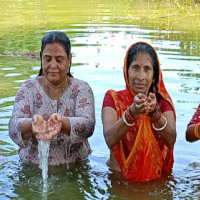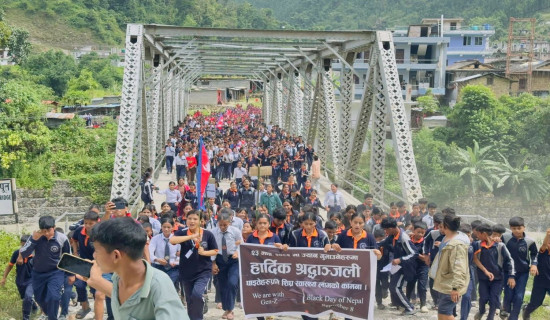- Saturday, 13 September 2025
Street food in summer raises health concerns
BY SUSHMA MAHARJAN,Kathmandu, June 24: As monsoon rains drench the Valley, concerns are rising over the safety and hygiene of Kathmandu’s street food. Health professionals caution that the seasonal risk of food- and water-borne diseases increases significantly when hygiene is not maintained by street vendors.
“During the monsoon, the risk of contamination multiplies due to dirty surroundings, stagnant water, and poor sanitation,” said Sanjogta Thapa Magar, Microbiologist Officer at the Department of Agriculture and Animal Husbandry under Kathmandu Metropolitan City.
“This is the peak season when water sources are easily contaminated, increasing the risk of epidemic outbreaks such as cholera. We need to be extremely cautious,” she added. “If we observe closely, most street food is openly displayed, and often cooked in the same oil for prolonged periods, which degrades its quality.”
Despite the health risks, street food remains popular, particularly among students, workers, and commuters. “I eat chatpate, momos and other foods from roadside stalls,” said Rachana Thapa, a grade 12 student working at a shoe shop in Ason. “It’s tasty and affordable, I enjoy them. But I do worry about cleanliness, especially when I get sick.”
According to the World Health Organisation, an estimated 600 million, almost 1 in 10 people, fall ill after eating contaminated food each year.
Mohan Krishna Maharjan, Senior Food Research Officer at the Department of Food Technology and Quality Control in Babarmahal, said that food safety continues to be a major challenge. “There are three primary factors that affect food safety: physical (dust, hair, plastic, metal particles), chemical (residue from packaging materials and detergents, artificial colour), and biological (insects, parasites, fungi, viruses),” he said. “These aspects are often overlooked by street vendors.”
He added that in the last fiscal year, 4.2 per cent of the 2,659 food samples tested by the department failed to meet the required safety standards.
However, street vendors claim they are doing their best under difficult circumstances. “We try to keep things clean, and use jar water,” said Ram Sharma, who runs a panipuri cart at Yangal, Kathmandu, “But we don’t have proper access to water or garbage disposal. We have no other option but to use street corners to drain wastewater.”
Sharma, who has been selling panipuri for 12 years, said his customers continue to return, and he hasn't observed any major health issues. “People keep coming back, I don’t think there’s much of a health problem,” he said.
Previously, the metropolis had initiated a campaign to remove and ban street vendors a few months after electing its new mayor in the 2022 local elections. The ban included a prohibition on street vending using carts, as well as selling items like vegetables and fruits on bicycles along roads and footpath, particularly those involving water, due to a risess in cholera cases. This decision was made to control the spread of the disease, as cholera is often transmitted through contaminated food and water.
However, over time, vendors have begun to reappear on the streets. Additionally, they are often seen setting up small stalls in front of main shops and quickly fleeing upon seeing city police.
Meanwhile, Sanjogta warned that consuming unhygienic food may cause immediate health issues such as food poisoning and diarrhea, but the risks go beyond short-term effects. “Long-term exposure to contaminated food can lead to serious chronic illnesses and weaken the immune system over time,” she added.








-square-thumb.jpg)







